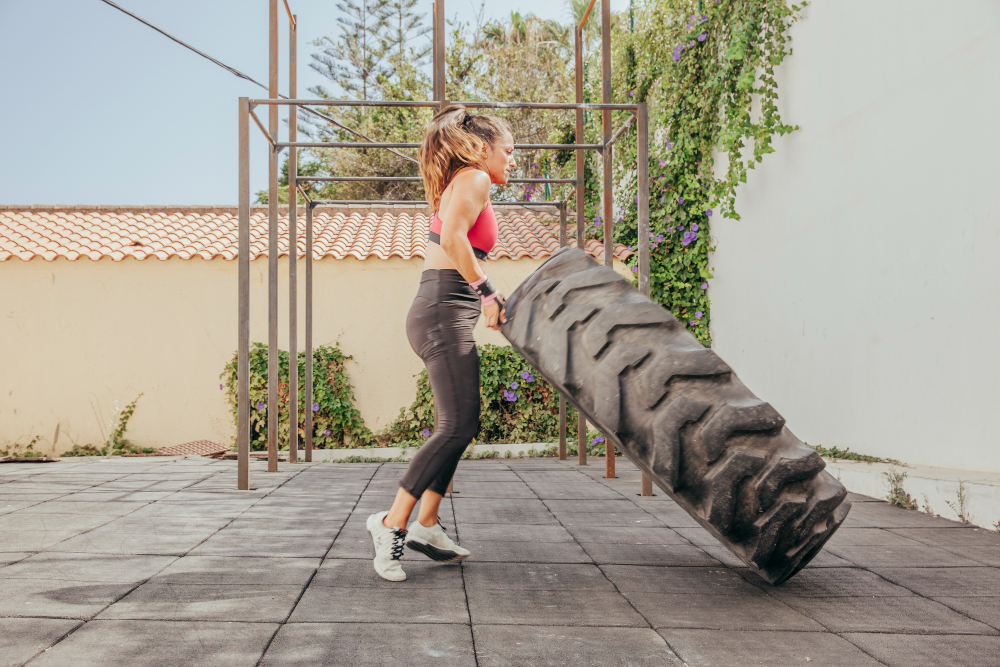The Correct Way to Foam Roll Your Entire Back
Nowadays, a foam roller can be found in nearly every fitness center, gym, and even at-home workout setup. Foam rolling has a lot of advantages, including maintaining and improving mobility as well as assisting in preventing and treating muscle tightness.
Foam rolling the back is however somewhat debatable because of the location of the body. While foam rolling in this area can be beneficial, most people are unaware of the drawbacks that come with it. It’s crucial to do it correctly to avoid injury or aggravating existing pain.
Here are the section-by-section instructions that professionals want you to follow when foam-rolling your back.

The Neck:
The cervical spine in your neck, also known as the neck joints should not be directly rolled up and down over.
According to Jessica Tranchina, DPT physical therapist and owner of the Generator Athlete Lab, “a lot of people come to us with tightness and tension in their neck and shoulders and want some relief.” “Rolling right over the neck puts too much strain on your neck and cervical vertebrae, but rolling through the shoulders and midback is acceptable.” Particularly, we advise against rolling the neck backward over the foam roller because it puts too much strain on the spinal column.
Having said that, you can massage your neck using a foam roller, but bear in mind that the neck is regarded as a risky area to work on in any way. It’s a good idea to see a licensed physical therapist or other practitioners of your choice before beginning to use a foam roller to help with neck pain.
Fei Jiang, DPT, an orthopedic certified specialist at Providence Saint John’s Health Center’s Performance Therapy, suggests placing the foam roller behind the neck (like a pillow) as you lie on your back and slowly turn your head from side to side to reduce tightness in the base of the neck. Stop frequently and slowly side bend left and right.
The upper back:
When it comes to foam rolling, you should exercise caution when working on the lumbar spine. Foam rolling directly over your back especially while leaning back into the roller is not advised because it lacks the same type of support the thoracic spine receives from the ribs.
There is a safe way to roll your lower back, so give it a try. You can relax the muscles along the sides of your low back by lying on your side and rolling on a foam roller, according to Tranchina, your low back can experience a lot of relief from this.
Rolling your gluteal muscles and piriformis (the muscles in your buttocks) can also help relieve lower back pain or tension, as can using a smaller object such as a tennis ball, to target sore or tight lower back muscles on either side of the spine.
Although foam rolling is generally a safe practice, you should proceed with caution when rolling your back. Here are a few more pointers for making the most of your foam rolling sessions for your back:

SELECT THE APPROPRIATE FOAM ROLLER:
Foam rollers generally come in three different densities: mild (white), medium (blue), and hard (black),” says Jiang. Other variations come in ridged and vibrating varieties.
The ideal roller for you ultimately comes down to personal preference, but it’s important to remember that more pain is not always better. “Use the mild dense foam roller if you know your back is more sensitive to pressure; if you like more pressure, use the black foam roller or one with ridges.”
BEFORE WORKOUT OR BEFORE GOING TO BED, TRY ROLLING:
There isn’t just one ideal time to foam roll, but if you’re looking for suggestions on when to fit it into your schedule, there are two options. “If you’re going to play a sport that requires a thoracic extension, such as tennis. It might be a good idea to foam roll your upper back and stretch your chest after or before bed if you spent the day sitting at your desk or if you took a long bike ride and spent hours hunched over the handlebars,” advises De Mille. Fit it in if you can, whenever you can.
SUPPORT YOUR HEAD AND NECK AT ALL TIMES:
Tranchina advised that hands should be clasped behind the neck and head because people often forget to protect their necks while foam rolling. This is simply to prevent neck pain and injury.
If you follow these specific instructions, you won’t need to worry about getting hurt or experiencing back pain.

